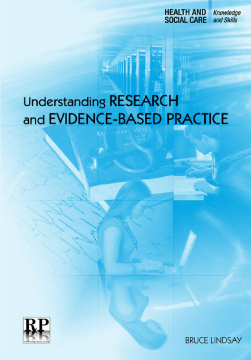
Additional Information
Book Details
Abstract
This accessible textbook provides an understandable and interactive introduction to research and evidence-based practice in health and social care. It is aimed at students in Further Education, on Foundations Degree courses and in the first year of a diploma or undergraduate programme in higher education.
The book assumes no prior knowledge of health and social care research on the part of the reader and uses straightforward language, supported by illustrative graphs and figures, to describe the research process and the ways in which evidence is used to change and develop care.
Content is structured in a logical fashion. The text begins by defining key terms, then takes the reader along a pathway from the creation of initial research questions or objectives, through the design and undertaking of a research project, the adoption of findings into practice and the ongoing audit and evaluation of new practice to ensure its continued effectiveness. Exercises and case studies support student learning and the author’s personal reflections on the research process make this a lively and engaging text.
The Health and Social Care series
This series of textbooks is aimed at students on Health and Social Care Foundation Degree programmes in FE and HE institutions. However, the books also provide short introductions to key topics for Common Foundation Programme modules and will be suitable for first-year undergraduate courses in a variety of Health and Social Care subject areas. Books in the series will also be useful for those returning to practice and for overseas nursing students. The series includes three types of textbook:
• Knowledge and Skills books;
• Theory and Practice books;
• Specialist books that cover specific professions, topics and issues.
All titles in the series will address the common elements articulated in relevant sector skill frameworks, for example, Skills for Care, Skills for Health, the NHS Knowledge and Skills Framework.
INTRODUCTION
SECTION 1 – Making Sense of the Research Process.
1 – Identifying the research aim.
2 – Reviewing the literature.
3 – Designing a study – the choice of methods.
4 – Can it be done? Ethical approval and resources.
5 – Recruitment and data collection.
6 – Data analysis.
7 – What do we know now?
SECTION 2 – Using Evidence in Practice
8 – Reviewing the evidence – making decisions about quality.
9 – Putting the evidence into practice.
10 – Audit and evaluation.
11 – Closing the circle: issues for the future.
REFERENCES
INDEX
